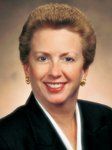Begin obesity programs in early childhood
Customize your obesity program for children, beginning as early as preschool

More recently, First Lady Michelle Obama started her Let's Move program, which includes four goals: providing parents with information and support they need to help their children eat properly; ensuring that schools offer healthier food; helping children get regular physical activity; and ensuring that healthy food is available.
We're beginning to realize that much of the problem starts at home. Children naturally mirror their parents' eating habits and by age six, research shows, they are 15 times more likely to be obese if their mothers are overweight. Efforts to prevent obesity should focus on children by age four because federal studies show that if obesity begins before eight years of age, obesity in adulthood is very common.
Although the body-mass index (BMI), which is used to determine obesity, is calculated the same way for children and adults, the criteria used to interpret the meaning of the BMI number for children are different from those used for adults. For children, BMI age- and gender-specific percentiles are used because the amount of body fat changes with age and differs between girls and boys.
HEALTHY LEARNING PROGRAM
Under the direction of a sustainable-agriculture program, Ohio-based not-for-profit Veggie U is teaming up with teachers, parents, nutritionists and physicians to provide school children with learning opportunities about making healthy food choices. With fourth graders across the nation as the primary target, the educational venture is one example of a way to change how children look at healthy foods.
The five-week educational program, hosted on a farm in Huron, Ohio, gives school children the opportunity to grow their own fruits and vegetables. For those unable to visit the farm, the program is taught directly in schools. More than 1,800 classrooms participated in Veggie U during the last school year, giving more than 45,000 students the opportunity to learn about growing plants, environmentally friendly sustainable agriculture and how to read food labels.
There is little doubt that programs such as these will help make a difference in preventing childhood obesity. Delivering educational programs to children should be a top priority for the industry and the nation.
When it comes to changing mindsets and lifestyles, we must never lose sight of the fact that nothing has a greater impact on health and healthcare costs than the motivation to make the right choices. This is especially important as we try to make a difference in the lives of children and promote a healthier lifestyle for future generations.
Paula Sauer is vice president of care management for Medical Mutual of Ohio.
Conversations With Perry and Friends
April 14th 2025Perry Cohen, Pharm.D., a longtime member of the Managed Healthcare Executive editorial advisory board, is host of the Conversations with Perry and Friends podcast. His guest this episode is John Baackes, the former CEO of L.A. Care Health Plan.
Listen
Ohio’s Medicaid Work Requirement Efforts Aim to Boost Engagement, Avoid Coverage Loss
April 18th 2025Maureen Corcoran, director of the Ohio Department of Medicaid, believes the work requirement policy can be both a financial and moral effort to improve the lives of Medicaid consumers.
Read More
Breaking Down Health Plans, HSAs, AI With Paul Fronstin of EBRI
November 19th 2024Featured in this latest episode of Tuning In to the C-Suite podcast is Paul Fronstin, director of health benefits research at EBRI, who shed light on the evolving landscape of health benefits with editors of Managed Healthcare Executive.
Listen
Why Better Data and Awareness Matters for Medicaid Work Requirements
April 17th 2025With policymakers considering work requirements for Medicaid eligibility, Jennifer Haley, principal research associate in the Health Policy Division at the Urban Institute, said it’s more important than ever to understand how those changes could unintentionally cause harm, particularly when data systems fall short and public awareness is limited.
Read More